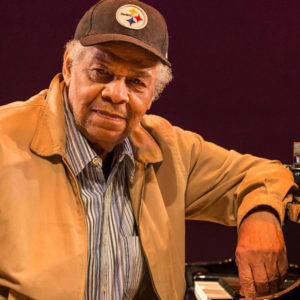From his NY Times Obituary by Bruce Weber, April 22,2014
Phillip Hayes Dean, the Playwright of Divisive ‘Paul Robeson,’ Dies at 83
Phillip Hayes Dean, a playwright whose stage portrait of the actor and social crusader Paul Robeson aroused one of the theater’s more unusual controversies and derailed his own promising career, died on April 14 in Los Angeles, shortly after a revival of the play opened at the Ebony Repertory Theater there. He was 83.
The cause was an aortic aneurysm, said Wren T. Brown, the theater’s founder and producer.
The public dispute over “Paul Robeson,” which starred James Earl Jones and opened on Broadway in January 1978, involved a welter of issues: artistic license, freedom of expression, accuracy in character portrayal and black pride. But it boiled down to the dissatisfaction of a group of prominent black intellectuals with Mr. Dean’s representation of Robeson, which they felt was insufficiently complex, insufficiently thorny and too easily digestible by a mass audience.
By then Mr. Dean had explored his own experience as a black man and the sociology of black communities in a number of well-received plays, including “The Sty of the Blind Pig,” set in Chicago as the dawn of the civil rights movement begins to unsettle the settled ways of the play’s characters; “Freeman,” about the diverse paths of two young black men in a small Michigan city much like Pontiac, where Mr. Dean came of age; and “Every Night When the Sun Goes Down,” which focuses on black-on-black exploitation and violence.
All three were performed Off Broadway, and “Sty,” starring Mary Alice, and “Freeman,” with Louis Gossett Jr., were produced on television. But none achieved the notoriety of “Paul Robeson,” a play with songs, in which the story of Robeson’s remarkable life as an athlete, scholar, actor, singer, civil rights activist and left-wing lightning rod unfolds in a monologue.
The play was initially intended as a television drama starring Mr. Jones, who brought Mr. Dean to the project. After it proved untenable for television, it evolved into a stage production and began touring the country in the fall of 1977 on a circuitous journey to New York that was fraught with artistic disagreements. Mr. Dean wrote several drafts of the script, and the original director, Charles Nelson Reilly, was replaced by Lloyd Richards.
Then just before opening night on Broadway, a letter signed by 56 writers, artists and politicians — among them Alvin Ailey, Maya Angelou, James Baldwin, Charles Rangel, Coretta Scott King, Julian Bond and Robeson’s son, Paul Jr., who was said to have initiated the protest — appeared as a paid advertisement in Variety.
“We, the undersigned members of the black community,” the letter declared in part, “having seen the production or read versions of it in progress, regretfully feel compelled to take the extraordinary step of alerting all concerned citizens to what we believe to be, however unintended, a pernicious perversion of the essence of Paul Robeson.”
The letter’s implication was that the play had softened Mr. Robeson’s positions as a political dissident, a black activist and an avowed socialist. Subsequent public statements by some of the signers underscored this. “What this country needs is a hero who is black and a socialist,” the actor Ossie Davis said. Baldwin said the play depicted Robeson as “a chocolate John Wayne.” Though no one called for a boycott, picketers demonstrated at the Lunt-Fontanne Theater. (Several weeks later, the play moved to a smaller house, the Booth.)
News reports, including one by the newscaster Carl Stokes, formerly the first black mayor of a major city, Cleveland, determined that some of the signers had not read or seen the play but had acted in deference to the Robeson family.
An outraged Mr. Dean said the protest was a McCarthy-like attempt to squelch freedom of speech and freedom of thought — he referred to the signers as the “House Un-Black Activities Committee” — precisely the kind of treatment Robeson had encountered in his testimony before the House Un-American Activities Committee.
Thirty-three writers — including Arthur Miller, Edward Albee, Jules Feiffer, John Guare, Paddy Chayefsky, Lillian Hellman, Stephen Sondheim and at least one black playwright, Ed Bullins — rose to Mr. Dean’s defense, condemning the protest in a statement as a lamentable attempt “to influence critics and audiences against a play.”
The Broadway show closed after just 77 performances. But in a vindication of sorts, Mr. Jones appeared as Robeson in a public television production of the play, and “Paul Robeson” was briefly revived on Broadway twice — in 1988 and 1995, both times starring Avery Brooks — without a peep of dissent
Nonetheless, Mr. Dean was set back by the protest, and though he continued writing, he never published or produced another play. “He was very, very deeply injured by those events, and it impeded the progress of what had been a significant theatrical voice,” Mr. Brown said in an interview on Tuesday.
| Credit Type | Production | Season |
|---|---|---|
| Playwright | Paul Robeson | 2005-06 Season |


